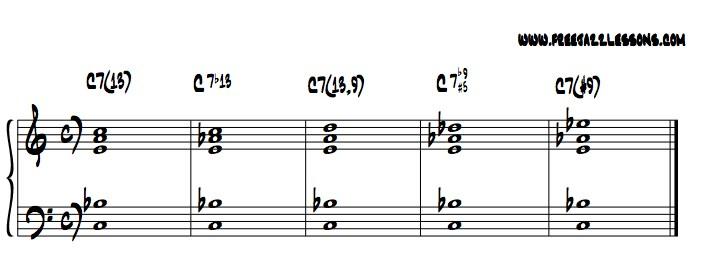

It’s a great map for your journey.įor those of you who’ve yet to learn Hanon exercises, Dariusz Terefenko’s created a great workbook, “Jazz Theory: From Basic to Advanced Study”, published by Routledge. They’ll have you playing the blues in no time. Specifically written for classically trained players, its fun and brilliant exercises and songs are a terrific introduction. The circle of fifths is used in songs like “Fly Me to the Moon” and “Autumn Leaves.”įor those of us who’ve learned Hanon exercises, there’s an excellent resource called “Hanon to Jazz” (published by FJH Music Company Inc.). In this post, we’ll tell you about some of the most common jazz chord progressions you’ll see.įor example, the 12 bar blues is used in every single blues song as well as many jazz songs, like “Hit the Road Jack”. If a song is widely played and well-known, it will become what’s called a Jazz Standard, a song that’s built out of commonly used jazz chord progressions. Like any other musical genre, jazz has its fair share of cliches and standard repertoire! You’ll also learn the general piano chord basics, like what you’ll see in this video below: When you take piano lessons, you’ll learn many of them in your classes. Whether you are brand new to playing the piano or have been playing classical piano for a while and want to transition to jazz, mastering these chords is essential if you want to become a better player.

Other popular jazz chord progressions include: The most common chord progression in jazz is the 2-5-1, or II-V-I. So let’s get started! What is the Most Common Chord Progression in Jazz? Whether you’re just getting started with jazz or you’ve been playing for years, these progressions will help add new life to your music. By learning basic blues scales and jazz piano chord progressions, you’ll be taking the first important step in transitioning to jazz piano. But it’s not be as difficult as it seems. To those of us who were trained in the classical tradition only, the journey from classical pianist to jazz pianist may seem like a long one. What beautiful and fascinating sounds fill our ears when their names come to mind! The seemingly illusive progressions and spontaneous elements, like syncopation and improvisation, sound virtually like magic. Thelonius Monk, Herbie Hancock, and Duke Ellington are just a few of the great jazz piano players.

In this blog post, we’ll take a look at some of the most common jazz piano chord progressions and how you can use them in your own playing If you’re interested in learning how to play jazz piano after starting off as a classical pianist, one of the first things you need to master are chord progressions. Piano music doesn’t have to be all classical, all the time! Here’s what you need to know about getting started with jazz piano chord progressions, courtesy of St.


 0 kommentar(er)
0 kommentar(er)
